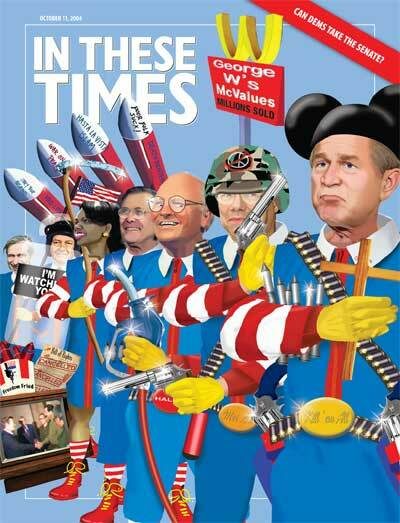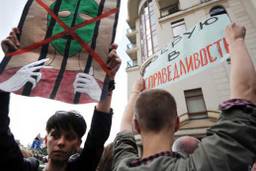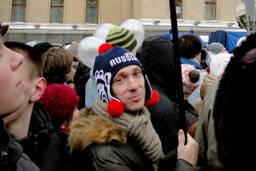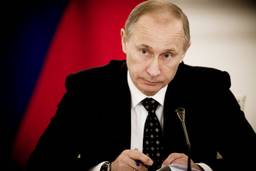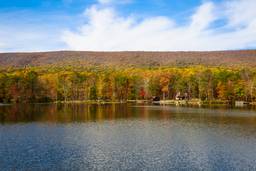As Russia’s summer of terror unfolded, it might have been easy to forget the long and agonizing prehistory to the headline-grabbing horrors that included exploding airliners, suicide bombs and schoolchildren taken hostage.
Independence-seeking Chechen fighters, who are behind the recent wave of terrorist attacks, have been a bone in the Kremlin’s throat for almost 300 years. And President Vladimir Putin faces the same dilemma that earlier led Czars and communist commissars to seek “solutions” to the Chechen problem as brutal as any in the annals of warfare.
“We have had war with Chechnya for two centuries, and not much has changed,” says Konstantin Simonov, with the Centre for Current Politics in Moscow. “This is a 19th Century conflict still going strong in the 21st.”
In recent years the conflict has mutated into a savage war of terrorist violence against helpless civilians, one for which Russian security forces appear woefully unprepared.
Terrorist actions have killed more than 1,000 Russians since the onset of war five years ago, with the death toll spiraling each year.
The attackers have grown bolder, knocking down two airliners, bombing a Moscow metro station and taking 1,200 hostages, mostly children, at a North Ossetian school. The daytime school seizure, the most horrific act yet in a conflict marked by massive criminal excesses on both sides, ended in more than 300 dead, half of them children, when ill-prepared Russian security forces stormed the building after a bomb exploded, apparently by accident.
“Our law enforcement bodies are in decay,” says Pavel Felgenhauer, an independent security expert. “So far we’ve been lucky that the terrorists have launched only random attacks and not a full-scale campaign of terror against us.”
An indigenous nation of mountain herdsmen and farmers with their own language and clan-based society, the Chechens have lived in the Caucasus for thousands of years. Russian Czar Peter the Great occupied the Caspian coastline in the 18th Century but declined to move inland after encountering the ferocious Chechen mountain warriors. Gen. Alexei Yermolov, who led Russian forces in the first years of a ruthless 30-year campaign to conquer the Caucasus region in the 19th Century, called the Chechens “congenital rebels.” Novelist Mikhail Lermontov, a Russian officer in that war, wrote in 1832, “[The Chechens’] god is freedom; their law is war.”
Yermolov and his successors eventually subdued Chechnya by incinerating its forests to uncover the guerrillas and by executing dozens of Chechen hostages for every Russian soldier lost.
In 1944 Soviet dictator Joseph Stalin accused the Chechens of collaborating with the Nazis, and had the entire nation — half a million people — deported to the wastes of Central Asia. An estimated 150,000 Chechens died during the forced winter march.
“Deportation and the exile that followed united the Chechens, in bitterness, sorrow and rage,” says Vladimir Dimitryev, with the Russian Institute of Ethnology. “We are reaping the harvest today.”
Soviet leader Nikita Khrushchev permitted the Chechens to return to their homes in 1956, and the region settled into its longest period of relative peace in three centuries. But the post-Soviet period may yet prove to be the bloodiest chapter in this seemingly endless conflict.
As the USSR was collapsing in 1991, former Soviet Airforce General Dzhokar Dudayev seized power in the Chechen capital of Grozny and declared independence, claiming that Chechnya had the same right to freedom as other former Soviet captive nations that were being welcomed into the world as new states.
Moscow disagreed, and in December 1994 then-President Boris Yeltsin ordered his forces to invade. Russian Defense Minister Pavel Grachev assured that “two regiments of paratroopers in two hours” could subdue Chechnya. The war lasted nearly two years, killed upward of 80,000 people, mostly civilians, and ended in humiliating Russian defeat.
But the Chechens proved incapable of governing themselves. Wartime military leader Aslan Maskhadov was elected president in 1997 but quickly lost control to powerful warlords, including legendary Chechen field commander Shamil Basayev.
By the late ’90s, Basayev and his allies had abandoned Chechen nationalism and embraced Islamic fundamentalism as their key ideology. Some Chechens took training in Afghan camps run by international terrorists, while funding, expertise and personnel from groups such as al Qaeda found their way to Basayev.
“The situation changed radically” after the first war, Simonov says. “The Chechen war became internationalized, part of a wider global conflict.”
Forces under Basayev invaded neighboring Dagestan in 1999 but were thrown back by Russian troops and local militias. After a series of devastating and still-unexplained apartment bombs killed nearly 300 Russians, a huge Russian army assaulted Chechnya and occupied the entire republic within six months — making Vladimir Putin a national hero and ensuring his landslide victory in March 2000.
But Maskhadov’s rebel forces continued to strike back, killing a dozen or more Russian troops each week, and making a mockery of Kremlin declarations that “normalcy” is returning to Chechnya.
Female suicide bombers, recruited and trained by Basayev, have wreaked havoc. These “Black Widows” — so named by Russians because they’re typically Chechen women who’ve lost their husbands to war — have killed hundreds in the Moscow metro, at a rock concert, on busy street corners and by bringing down two Russian airliners.
Until this summer, the worst incident was the seizure by a Chechen suicide squad of a downtown Moscow theatre with 800 hostages in October 2002. That siege ended when elite security troops pumped sleeping gas into the theatre, then charged in and killed the Chechen fighters. The operation was a tactical success, but a political disaster: Nearly 130 hostages died from the gas, prompting a wave of public outrage.
Putin has staked much on an effort to install a pro-Moscow government in the region, in hopes of “Chechenizing” the conflict. But a rebel bomb killed the Kremlin’s first man, President Akhmad Kadyrov, last May. A new strongman, Alu Alkhanov, was elected in August to replace him, but the record would seem to hold out little hope.
Chechnya’s first leader, Dudayev, was killed by a Russian missile in 1996. His successor, Zelimkhan Yandarbiyev, was assassinated by a car bomb set by Russian agents in the Gulf state of Qatar earlier this year. Maskhadov is holed up in the rugged mountains of southern Chechnya and is said to still command widespread support.
Unless the Kremlin decides to finally “solve” its intractable Chechen problem by repeating the genocidal policies of the past, it may yet find there is no other way but to sit down and negotiate with Maskhadov.

